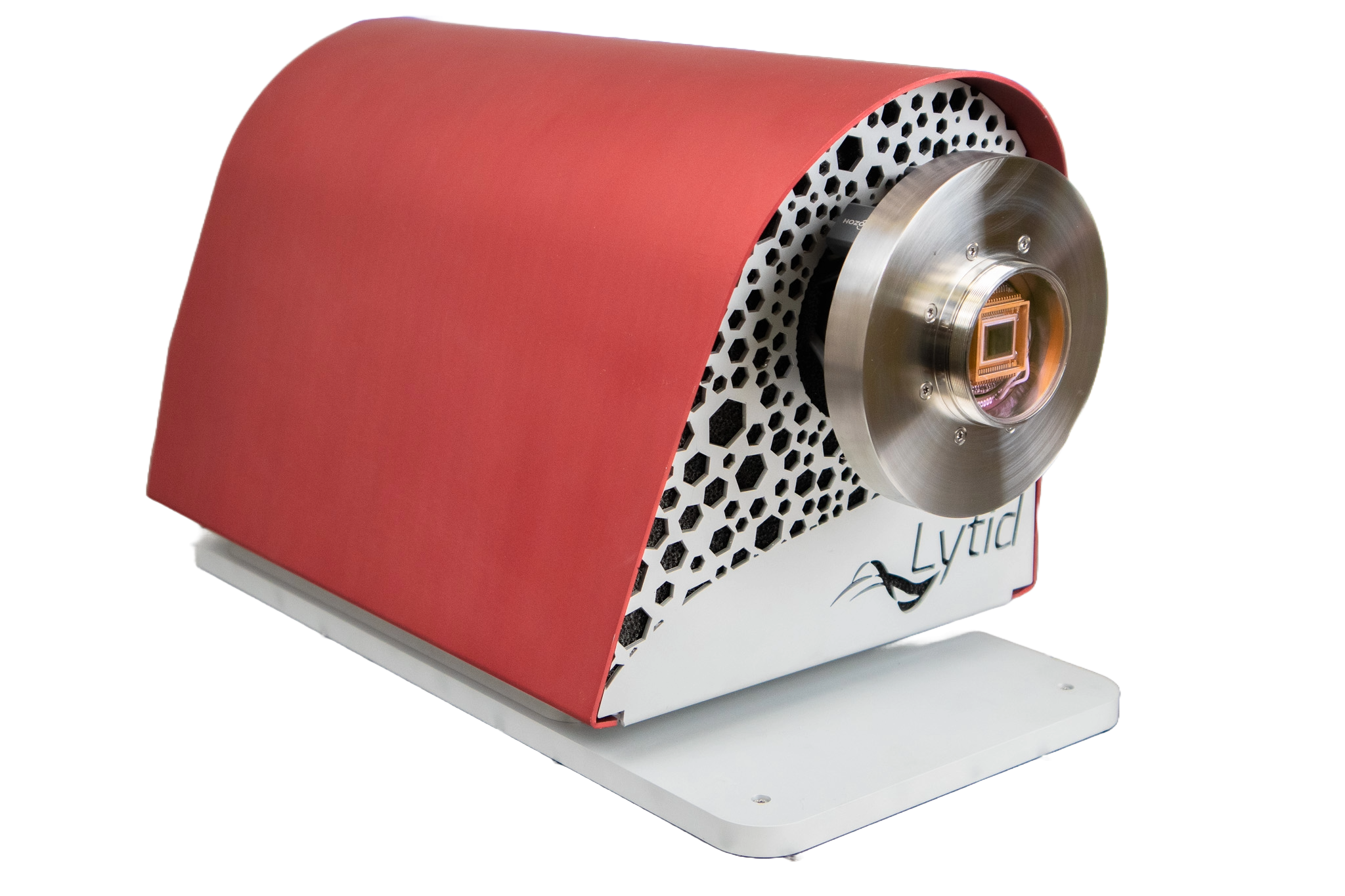SWIR, beyond visible

SWIR radiation
Short-wave infrared (SWIR) light is typically defined as non-visible light which falls within 900 – 1700 nm in wavelength, but it is also common to refer to extended-SWIR or NIR as the range from 780 to 2500 nm. Thus this range lies between VIS (390-780 nm) and MIR-FIR (3000-10 000 nm). In comparison to the neighbour spectra, SWIR imaging offers unprecedented advantages : it is unique to both visible imaging and other forms of IR-imaging in that it is neither affected by poor ambient conditions nor reliant on thermal emissivity. Driven by unceasing advancements on SWIR sensing, SWIR imaging is nowadays a key technology for many applications. This is why Lytid developed SIRIS, one of the most performant InGaAs-based SWIR cameras on the market.
SWIR imaging: see the invisible
SWIR light allows you to see what the human eye cannot. Unlike MIR-FIR, SWIR imaging does not rely on the inherent emissivity of objects, hence SWIR radiation is not characterized as thermal energy. With respect to MIR-FIR imaging, SWIR images offer a higher degree of resolution and detail, comparable to visible images. But, unlike VIS-imaging, SWIR imaging is not inhibited by poor ambient working conditions. Ambient star light and background radiance (airglow) are natural emitters of SWIR radiation and provide excellent illumination for outdoor, night-time imaging. This makes SWIR imaging successful in conditions where VIS-imaging fails: at night or in dark conditions, through atmospheric obscurant, like dust, fog, smoke and fire.
A whole world of applications
Thanks to its unique features, SWIR imaging offers access to plenty of applications. Penetration through obscurant and minimal atmospheric influence makes SWIR imaging a valid ally for night vision, security and surveillance, and astrophysics observation. The capability of SWIR photons to penetrate biological tissues while being harmless for living beings, opens the door to non-invasive, non-destructive, in vivo SWIR medical imaging and fluorescence microscopy in small animals. SWIR imaging is also used for quality inspection of Silicon components, being this material transparent to SWIR light. Also, colors that appear almost identical in the visible may be easily differentiated using SWIR, improving product analysis in food and pharma industry.
Short Wave InfraRed product
More than 170 THz / Less than 1.7um
Ultimate cooled scientific SWIR camera

